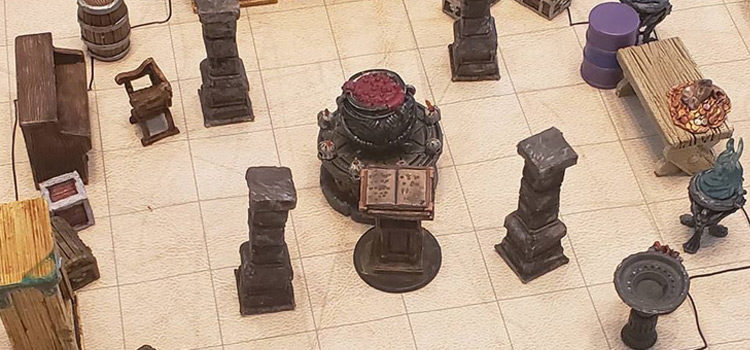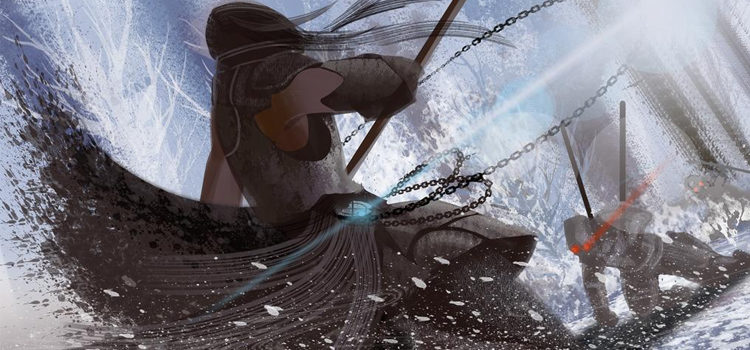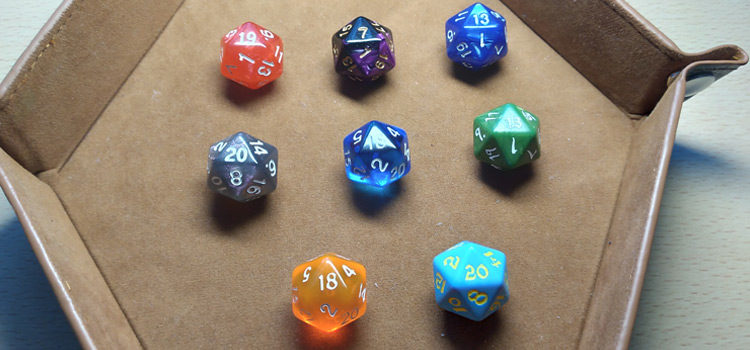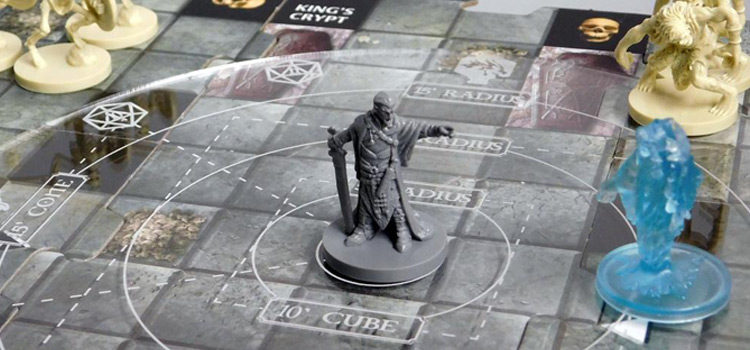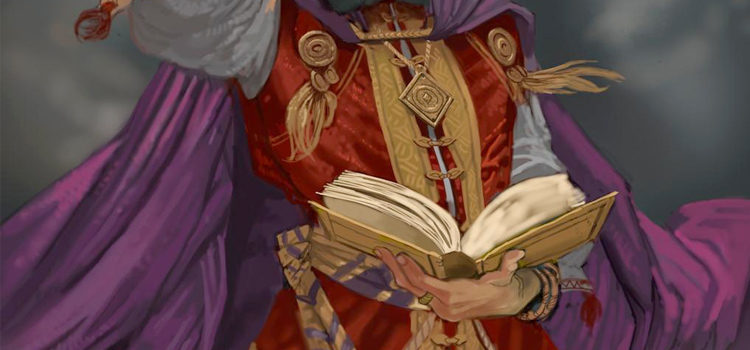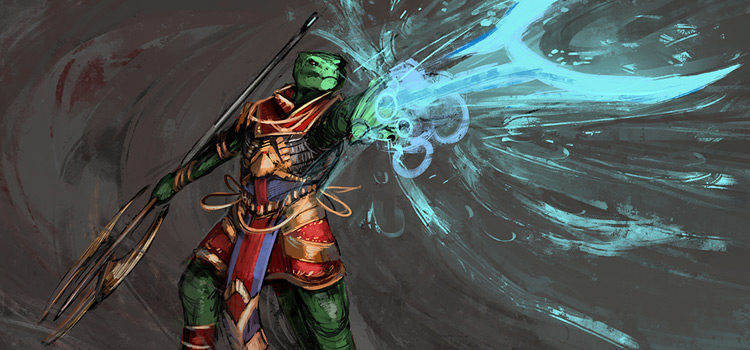15 Best Cantrips In Dungeons & Dragons 5th Edition
This post may contain affiliate links. If you buy something we may get a small commission at no extra cost to you. (Learn more).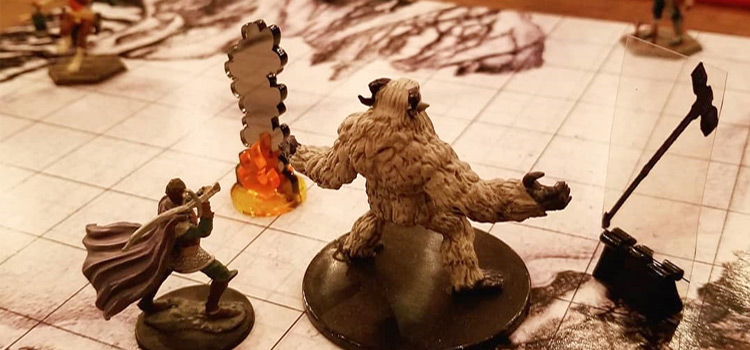
In Dungeons & Dragons 5th edition, cantrips are 0-level spells that don’t require spell slots to cast.
Full spellcasters (Bards, Clerics, Druids, Sorcerers, Warlocks, and Wizards) have cantrips on their class spell lists. And characters of these classes know a handful, learning more as they gain levels.
Some of these cantrips serve as offensive combat options akin to martial characters attacking with their weapons.
In other scenarios, cantrips provide casters with extra utility to address obstacles.
Considering the many available options, you might carefully consider what goes into your limited cantrip repertoire.
Well I’ve played my fair share of spellcasters so I have a sense of what spells prove most useful for an adventurer. If you’re looking to make the most of your caster’s choices then here’s my picks of all the best cantrips in Dungeons & Dragons 5th edition.
15. Light
Source: Player’s Handbook
Simple in concept, this cantrip turns an object into a light source for an hour. Though you can only cast this spell on a single item at a time.
Your comrades who lack the darkvision feature will appreciate you having light.
Plus an illuminated object can create distractions or help in scouting out dark or distant places.
14. Mold Earth
Source: Elemental Evil Player’s Companion
A spell that lets you manipulate dirt or stone, mold earth allows for a handful of effects: move loose earth like you have a magic shovel, or create messages and symbols in stone.
You can even alter dirt or stone on the ground into difficult terrain.
Overall mold earth gives you options for manipulating your surroundings, given the right environment at least. Valuable when used well.
13. Shocking Grasp
Source: Player’s Handbook
This offensive spell gives casters a close combat option for those times they get cornered.
After successfully hitting with a melee spell attack, you deal lightning damage to shocking grasp’s target.
As with most damaging cantrips in the game, shocking grasp damage at levels 5, 11, and 17.
Secondly this cantrip also removes a target’s reactions on a hit; this effect makes it particularly useful for distancing yourself from an enemy while avoiding opportunity attacks and dealing some damage along the way.
12. Mending
Source: Player’s Handbook
When characters adventure, they’re bound to break a thing or two—whether in a fight or smashing through a window for a heist.
Luckily mending provides an easy and often quick means to fixing damaged objects.
This cantrip repairs a break or tear in an object without leaving any trace of the damage, even going so far as to adhere two broken halves back together.
All it takes is some imagination to put this cantrip to good use.
For example, hide important documents (such as a treasure map) by dividing them into pieces and using mending to make them whole again.
Simple, yet effective.
11. Message
Source: Player’s Handbook
This sometimes-underrated spell allows you to briefly contact a creature within 120 feet.
Only the target hears the message, and the recipient can give a reply perceived only by you.
Barring some specific obstacles, the spell reaches the target unerringly.
Though not the flashiest cantrip, message can easily keep characters in touch with one another.
10. Spare the Dying
Source: Player’s Handbook
This Cleric-exclusive cantrip stop creatures from bleeding out by stabilizing them at 0 hit points.
Spare the dying won’t have any effect on undead creatures or constructs. But they’re not typical targets anyways.
This cantrip’s a literal lifesaver in the face of debuffs that prevent characters from healing or if you’re out of healing options.
9. Ray of Frost
Source: Player’s Handbook
An offensive cantrip, ray of frost deals cold damage that increases as your character gains more levels.
While it doesn’t have the biggest damage die, this cantrip provides utility since the target’s speed also gets reduced by 10 feet until the start of your next turn.
The speed reduction might prove useful in deterring enemies from reaching your allies or escaping.
8. Booming Blade
Source: Sword Coast Adventurer’s Guide
This melee-focused cantrip gives casters the spell sword experience.
Booming blade allows you to attempt a weapon attack laced with additional magical effects.
On a hit, you add thunder damage to the strike, and the creature triggers additional damage should it willingly move before the start of your next turn.
Both instances of damage also gain additional damage dice at levels 5, 11, and 17.
Another spell from the same sourcebook, green-flame blade, works similarly. Albeit with fire damage that hops onto another target.
Booming blade ekes it out by a tad since the secondary effect discourages movement by threatening a significant amount of thunder damage, should a struck creature choose to move.
7. Vicious Mockery
Source: Player’s Handbook
Characters who use this cantrip unleash insults that legitimately hurt their targets—and not just emotionally.
Granted, the spell doesn’t deal too much damage even as it scales with your character’s level. Though few creatures have resistance or immunity to psychic damage.
What this option lacks in offensive power it makes up for in utility: vicious mockery also causes the target to have disadvantage on its next attack roll before its next turn ends.
Note: this cantrip is exclusive to the Bard’s spell list.
If you’re good with snappy comebacks and witty one-liners that you can throw out mid-battle, then vicious has another layer of narrative fun to it, too!
6. Mage Hand
Source: Player’s Handbook
For arcane casters, mage hand serves as an early form of telekinesis.
This spell creates a small, spectral hand that floats around and manipulates things for you.
The hand itself can’t attack, use magic items, or lift anything more than 10 pounds; otherwise, it operates as the caster commands.
Mage hand enables some long-distance shenanigans, from retrieving distant items to opening doors and more.
And this cantrip has a lot of potential use and really benefits from player creativity.
5. Toll the Dead
Source: Xanathar’s Guide to Everything
For Clerics, Warlocks, and Wizards, toll the dead is a great offensive cantrip.
Along with having decent range, this spell deals 1d8 necrotic damage (which most creatures lack resistance or immunity to) when the targeted creature fails the Wisdom save against it.
When the target’s already wounded, the damage die goes up to 1d12. And as with other cantrips, the number of damage die increases at levels 5, 11, and 17.
Overall, toll the dead boasts notably high base damage potential among the ranged cantrips.
4. Minor Illusion
Source: Player’s Handbook
This cantrip creates a sound or an image of an object no larger than a 5-foot cube that can last for up to a minute.
Though it requires some playing along from the Dungeon Master, minor illusion shines in the hands of a creative player.
It can set up distractions with a distant sound; maybe you want to create the semblance of obstacles with a boulder blocking a pathway.
Conjuring some cover, like a wall or a closed door, could also help characters hide and escape from their foes.
3. Eldritch Blast
Source: Player’s Handbook
Since this edition’s release, eldritch blast has widely been considered the best damage cantrip.
Level 1 characters start off with one beam that deals 1d10 force damage, and they get an additional beam at levels 5, 11, and 17 (for an eventual total of four attacks)—so you’re increasingly likely to deal damage when you use this spell.
No enemies have resistance to eldritch blast’s force damage. And only one creature has immunity to the damage type, which makes the cantrip great in almost every fight.
The Warlock class spell list has exclusive access to eldritch blast, and the Warlock can choose features to really make it shine with additional damage options and crowd control effects.
Non-Warlock characters might have to rely on optional feats or multi-classing to gain access to it, though that investment can be worth it for a worthy damaging cantrip.
2. Prestidigitation
Source: Player’s Handbook
For arcane casters prestidigitation functions as a catch-all cantrip for parlor tricks and other minor magical feats.
For example, having this spell shores up concerns regarding lighting or snuffing light sources (like torches), cleaning dirty adventuring gear, and even flavoring food.
To limited extents, prestidigitation also creates harmless sensory effects, temporary trinkets and illusions, and small marks or symbols.
This cantrip’s general usefulness will vary based on how the DM addresses certain minutiae. Though players might find innovative ways to apply prestidigitation’s conjuring abilities.
The druidcraft and thaumaturgy cantrips also boast similarly flavorful effects, though more nature- and paranormal-themed respectively.
1. Guidance
Source: Player’s Handbook
Arguably the most useful cantrip in the game, guidance gives a character a flat d4 bonus to their next ability check (which includes skill checks and initiative rolls), after which the spell ends.
So long as your concentration isn’t occupied by another spell, you can repeatedly cast it.
A typical adventuring party will make multiple skill checks each gaming session, so guidance is a pretty valuable buff that will absolutely see repeated use.
With this cantrip’s general usefulness, any spellcaster—typically Clerics and Druids—that has access to guidance should nab it.
